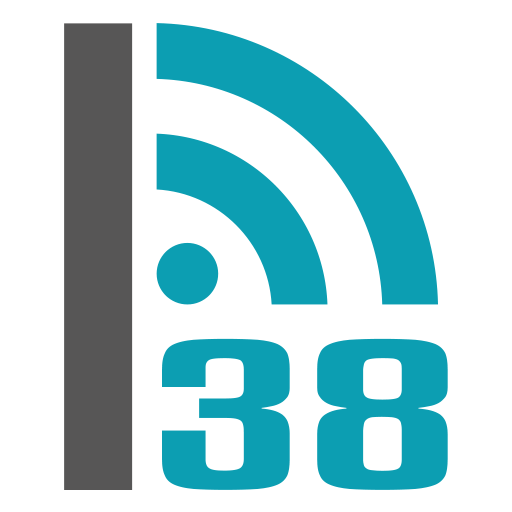Frank F Kraft
age ~62
from Albany, OH
- Also known as:
-
- Frank Te Kraft
- Frank Janette Kraft
- Frank E Kraft
- Phone and address:
-
667 Pettit Rd, Albany, OH 45710
(740)6985123
Frank Kraft Phones & Addresses
- 667 Pettit Rd, Albany, OH 45710 • (740)6985123
- Starrucca, PA
- Briarcliff Manor, NY
- Adrian, MI
- Ballston Spa, NY
Work
-
Position:Professional/Technical
Education
-
Degree:Graduate or professional degree
Us Patents
-
Multivoid Heat Exchanger Tubing With Ultra Small Voids And Method For Making The Tubing
view source -
US Patent:6536255, Mar 25, 2003
-
Filed:Dec 7, 2000
-
Appl. No.:09/732141
-
Inventors:Frank F. Kraft - Adrian MI
-
Assignee:Brazeway, Inc. - Adrian MI
-
International Classification:B21C 2300
-
US Classification:72256, 7237024, 7237025, 29890053, 165177
-
Abstract:This invention is a process for making micro-multiport tubing for use in heat exchangers. The tubing is a flat body with a row of side-by-side passageways, which are separated by upright webs. Processing of this tubing involves extrusion, a straightening and cutting operation, a rolling step to reduce the thickness of the flat body and to obtain ultra small voids, assembly and furnace brazing of the heat exchanger. This invention improves the grain size of the metal in the tubing and also improves the metallurgical strength of the tubing. There is at least 10 percent change in material thickness. The strain is concentrated at the center of the web and results in at least enough cold work to produce fine recrystallized grains during the brazing thermal cycle. The amount of grain growth is controlled and the improvement in the metallurgical strength is achieved.
-
Braze Alloy Flow-Barrier
view source -
US Patent:6644394, Nov 11, 2003
-
Filed:Jun 25, 2002
-
Appl. No.:10/183099
-
Inventors:Frank F. Kraft - Albany OH
Dave W. Skrzypchak - Adrian MI -
Assignee:Brazeway, Inc. - Adrian MI
-
International Classification:F28F 120
-
US Classification:165181, 179183, 29890053, 138 38
-
Abstract:A heat exchanger tube of the present invention has first and second surfaces with a longitudinal length and a lateral width. At least one of the surfaces has a plurality of striae that extend along a portion of the width of the tube. The tube has at least one passageway that allows a fluid to flow therethrough. The striae minimize and/or prevent unwanted flow of molten braze alloy along die-lines in the tube formed as part of the extruding process. The striae can be formed in the tube by rollers having projections that extend radially outward. The projections form the striae in the tube as the tube passes along the outer surface of the roller. The striae can be advantageously formed in the tube as part of the overall extruding process or subsequent to the extruding of the tube during the sizing process.
-
Micro-Channel Tubes And Apparatus And Method For Forming Micro-Channel Tubes
view source -
US Patent:8191393, Jun 5, 2012
-
Filed:Dec 11, 2007
-
Appl. No.:12/517484
-
Inventors:Frank F. Kraft - Albany OH, US
-
Assignee:Ohio University - Athens OH
-
International Classification:B21C 23/04
-
US Classification:72264, 72268, 72269
-
Abstract:An apparatus and method are provided for extruding a micro-channel tube () from a non-aluminum metal or alloy such as copper. The micro-channel tube is formed by simultaneously extruding two rectangular shaped billets () to form a top portion of the micro-channel tube and a bottom portion of the micro-channel tube in parallel. The top and bottom portions are then joined during the extrusion process (e. g. , within a die assembly) to form the micro-channel tube ().
-
Method And Apparatus For Manufacturing Extruded Parts
view source -
US Patent:20020121120, Sep 5, 2002
-
Filed:Dec 21, 2001
-
Appl. No.:10/032054
-
Inventors:Frank Kraft - Albany OH, US
Jerry Ziems - Sylvania OH, US
Charles Downing - Onsted MI, US -
International Classification:B21C023/08
-
US Classification:072/254000, 072/260000, 072/261000
-
Abstract:A method of manufacturing micro-multi-port tubing including actuating a hydraulic press to apply a force to a billet to extrude material through a die opening. The die opening defines at least two distinct segments to produce a single, unitary, continuous micro-multi-port extrusion strand having at least two distinct segments being interconnected by a web section. The method further includes separating the single, unitary, continuous micro-multi-port strand to substantially remove and/or reshape the web section to define at least two separate and independent micro-multi-port tubing segments from a single extrusion strand.
-
Micro-Multiport Tubing And Method For Making Said Tubing
view source -
US Patent:20020125004, Sep 12, 2002
-
Filed:Jan 11, 2001
-
Appl. No.:09/758743
-
Inventors:Frank Kraft - Adrian MI, US
-
International Classification:F16L009/18
F16L011/00 -
US Classification:165/180000, 138/115000, 165/905000
-
Abstract:This invention is a process for making improved micro-multiport tubing for use in heat exchangers. A multivoid heat exchanger tube is extruded from aluminum alloy billet. The alloy is a composition of cooperative elements which act with the aluminum to prevent recrystallization and grain growth which result in the necessary strength and duality of characteristics in the tubes. The composition of the alloy that is added to aluminum is some or all of the following: silicon, iron, copper, magnesium, manganese, zinc and titanium. The cold work during processing of the heat exchanger is limited to further retain the small grains.
-
Micro-Multiport (Mmp) Tubing With Improved Metallurgical Strength And Method For Making Said Tubing
view source -
US Patent:61929786, Feb 27, 2001
-
Filed:Oct 27, 1999
-
Appl. No.:9/427864
-
Inventors:Matthew M. Guzowski - Aurora OH
Frank F. Kraft - Adrian MI
Henry R. McCarbery - Palmyra MI -
Assignee:Brazeway, Inc. - Adrian MI
-
International Classification:F28F 102
B21D 5306 -
US Classification:165177
-
Abstract:This invention is a process for making micro-multiport tubing for use in automobile air conditioner heat exchangers. The tubing is a flat body with a row of side-by-side passageways, which are separated by upright webs. Processing of this tubing involves extrusion, a straightening and cutting operation, assembly and furnace brazing of the condenser. This invention improves the grain size of the metal in the tubing and also improves the metallurgical strength of the tubing. Ports are formed in the tubing during extrusion. These ports are separated by webs and the webs are extruded so that they have a reduced thickness at their centers. In response to successive cold working of the body, the webs are changed in shape to a more uniform thickness state. Stated other wise, in this invention, the webs are initially of hour glass shape such that when there is five percent change in material thickness, the strain is concentrated at the center of the web and results in at least fifteen percent cold work. With fifteen percent cold work or more, the amount of grain growth is controlled and the improvement in the metallurgical strength is achieved.
-
Ultra-Conductive Metal Composite And Methods Of Making The Same
view source -
US Patent:20220389540, Dec 8, 2022
-
Filed:Jun 7, 2022
-
Appl. No.:17/834876
-
Inventors:- Albany OH, US
Frank F Kraft - Albany OH, US -
Assignee:MetalKraft Technologies, LLC - Albany OH
-
International Classification:C22C 9/00
C23C 16/26
B21C 23/24 -
Abstract:A conductor material includes a metal matrix, and a first carbon allotrope distributed within the metal matrix, the first carbon allotrope being aligned with a direction of electric current flow through a length of the metal matrix. The metal matrix and the first carbon allotrope have an electrical interfacial coherency.
-
Cables Exhibiting Increased Ampacity Due To Lower Temperature Coefficient Of Resistance
view source -
US Patent:20200027624, Jan 23, 2020
-
Filed:Jul 17, 2019
-
Appl. No.:16/514785
-
Inventors:Shenjia Zhang - Zionsville IN, US
Sathish Kumar Ranganathan - Avon IN, US
Keerti Sahithi Kappagantula - Athens OH, US
Frank F. Kraft - Albany OH, US -
International Classification:H01B 1/02
H01B 1/04
H01B 13/00 -
Abstract:Cables including conductors formed form ultra-conductive copper wires which have a lower temperature coefficient of resistance are disclosed. Methods of making the cables including conductors with ultra-conductive copper wires are further disclosed.
Name / Title
Company / Classification
Phones & Addresses
BROTHERS TOWING, TRANSPORT & REPAIR, LLC
BILLIARDS GALORE INC
Frank A Kraft 1730 E Jericho Tpke, Huntington, NY 11743
1730 E Jericho Tpke, Huntington, NY 11743
1730 E Jericho Tpke, Huntington, NY 11743
ANACOTE Corp.
Accounting · Plating/Polishing Service · Electroplating, Anodizing, & Coloring Metal · Anodizing (Manufacturers)
Accounting · Plating/Polishing Service · Electroplating, Anodizing, & Coloring Metal · Anodizing (Manufacturers)
4512 Vernon Blvd, Long Island City, NY 11101
45-12 Vernon Blvd, Long Island City, NY 11101
125 Kensington Dr, West Fort Lee, NJ 07024
(718)3611740, (718)3921842
45-12 Vernon Blvd, Long Island City, NY 11101
125 Kensington Dr, West Fort Lee, NJ 07024
(718)3611740, (718)3921842
Resumes

Owner And President
view sourceWork:
Kraft Brothers Horse Equipment
Owner and President
Owner and President
Skills:
Sales
Autocad
Autocad

Frank Kraft
view source
Frank Kraft
view source
Frank Kraft
view source
Frank Kraft
view source
Frank Kraft
view source
Frank Kraft
view sourceLocation:
United States
Youtube
Flickr
Googleplus

Frank Kraft
Work:
Thomco - Network Admin (2009)
Education:
Southern Polytechnic State University - BSIT

Frank Kraft

Frank Kraft

Frank Kraft

Frank Kraft

Frank Kraft

Frank Kraft

Frank Kraft
Myspace

Frank Kraft
view source
Frank Kraft
view source
Frank Kraft
view source
Frank Kraft
view source
Frank Kraft
view source
Frank Kraft
view source
Frank Joseph Kraft
view source
Frank Katulis Kraft
view sourceClassmates

Frank Kraft
view sourceSchools:
Flasher High School Flasher ND 1986-1990
Community:
Douglas Benson, Juanita Johnson, Ken Hertel

Frank Kraft
view sourceSchools:
Tuslaw High School Massillon OH 1969-1973
Community:
Patricia Duncan, Vicki Hershey, Robert Stuck

Frank Kraft
view sourceSchools:
David Glasgow Farragut Elementary School Rota NC 1972-1976
Community:
Betty Mickens, Michael Workman, Charles Andy, Richard Mawby

Flasher High School, Flas...
view sourceGraduates:
Frank Kraft (1986-1990),
Richard Friesz (1977-1981),
Kyla Gerhardt (1996-2000),
John Scott Schafer (1967-1971),
Kathleen Ternes (1965-1969)
Richard Friesz (1977-1981),
Kyla Gerhardt (1996-2000),
John Scott Schafer (1967-1971),
Kathleen Ternes (1965-1969)

Neosho High School, Neosh...
view sourceGraduates:
Frank Kraft (1970-1973),
patricia petty (1961-1965),
Julie Thomas (1973-1977),
Micki Spicer (1968-1972),
Tricia Patterson (1990-1994)
patricia petty (1961-1965),
Julie Thomas (1973-1977),
Micki Spicer (1968-1972),
Tricia Patterson (1990-1994)

Woodlynne Elementary Scho...
view sourceGraduates:
Frank Kraft (1961-1965),
Bonnie Heston (1978-1982),
Albert Siligrini (1987-1991),
Beth Williams (1976-1980),
Sharon Bittner (1992-1996)
Bonnie Heston (1978-1982),
Albert Siligrini (1987-1991),
Beth Williams (1976-1980),
Sharon Bittner (1992-1996)
Get Report for Frank F Kraft from Albany, OH, age ~62













